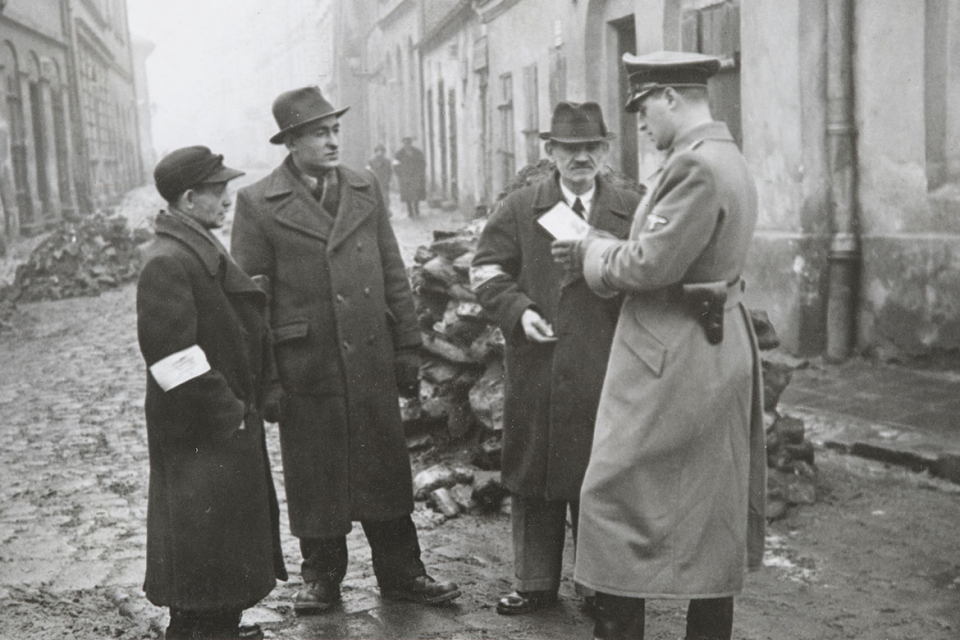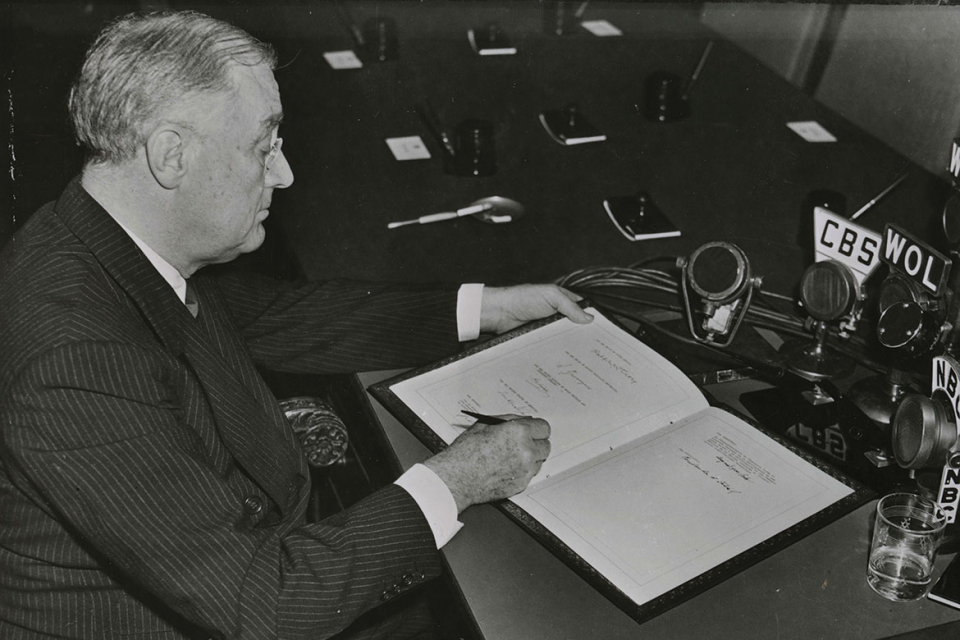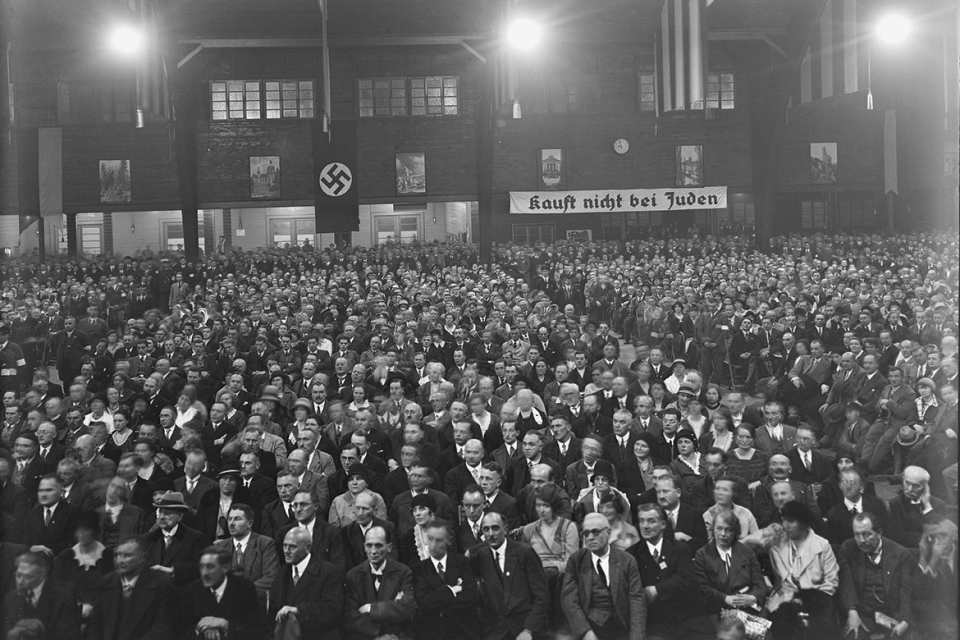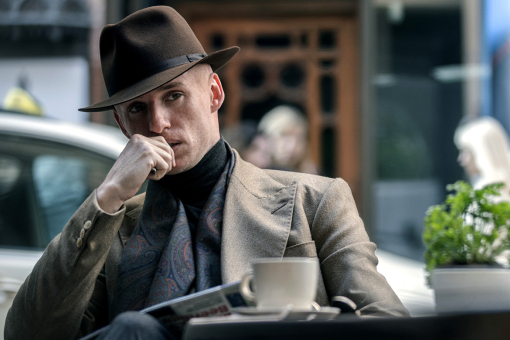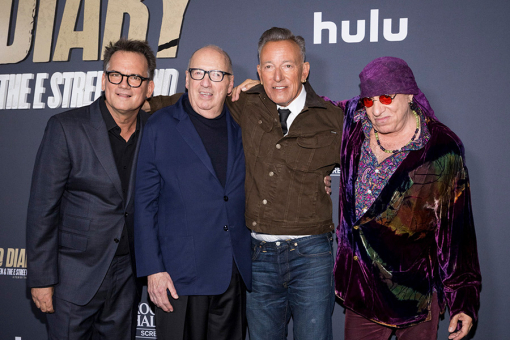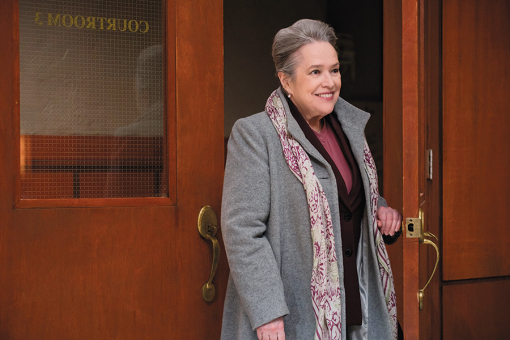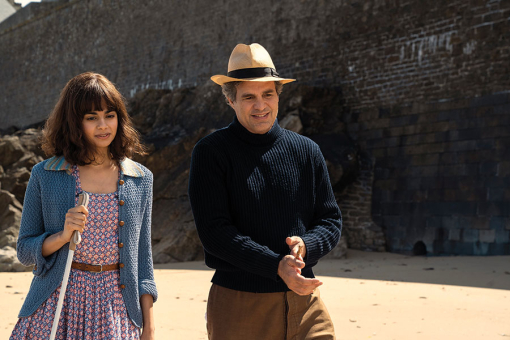The images of eyeglasses, shoes and suitcases — piled by the thousands — are imprinted on our collective memory. As are the photos of some of their former owners, the skeletal survivors of the concentration camps whose horrific stories, recounted in a variety of accents, remind us of a world that is no more.
Yet, as with all crimes — even one of history's most documented — some basic questions persist: who knew what, and when?
In The U.S. and the Holocaust, a three-part PBS documentary series premiering September 18, Ken Burns, Lynn Novick and Sarah Botstein examine the lingering questions, including why the United States did not act sooner. All three directed, with Burns serving as executive producer and Novick, Botstein and Mike Welt as producers.
Naturally, the film is harrowing and carries a "viewer discretion" warning. Still, Burns notes that the filmmakers did not want to "privilege the perpetrators" by focusing too much on death-camp footage. "There is a great deal of restraint in the film," he says. "But that restraint, in fact, aids the gobsmacking pain of this story."
Even today, the breadth and depth of the carnage remain incomprehensible. In 1933, when Hitler rose to power, Europe was home to 9 million Jews. By the war's end in 1945, at least two out of three were dead. Considering that American newspapers published thousands of articles about the Nazis, some as early as 1933, why didn't the U.S. do more? The answer, as the neon sign in Burns's editing room asserts: "It's complicated."
Don't take that as dismissive. As Burns notes, "I'll never work on a more important film."
The idea for this series had been percolating since he made his 2014 docuseries, The Roosevelts: An Intimate History. President Franklin Delano Roosevelt grew up in a social class, time and place where anti-Semitism was casually accepted. Even so, FDR was the first major candidate to denounce prejudice against Jews, and as president he hired more Jews than any predecessor. Having read Mein Kampf in the original German, Roosevelt despised Hitler. Yet he was hampered by an anti-Semitic State Department, Congress and much of the American public.
"It's too easy to say FDR could have done more," Novick says.
A famous case in point: the German ocean liner St. Louis, which sailed from Hamburg in May 1939 with 937 passengers, almost all of them Jewish refugees. It was headed for Cuba, which refused the ship, as did the U.S. and Canada. The St. Louis returned to Europe; ultimately, 254 of its passengers were killed in the Holocaust.
"People say, 'Why did FDR turn away the St. Louis?'" Burns says. "FDR didn't turn away the St. Louis. American law wouldn't permit it [to land]. He's hamstrung by the law; that's the important thing. He's not a king. Right? He's the president."
But the documentary looks back further, detailing how anti-Jewish sentiment had simmered in the U.S. since the early 1900s. That's when Eastern European Jews, fleeing pogroms, began arriving in waves. Henry Ford's hugely influential weekly newspaper, The Dearborn Independent, published anti-Semitic screeds. The Ku Klux Klan marched on Washington, and the Immigration Act of 1924 (aka the Johnson-Reed Act) established quotas on émigrés from the Eastern Hemisphere.
And American racism wasn't limited to the country's borders; Jim Crow laws in the U.S. inspired the Third Reich's laws against Jews.
Yet, even after Kristallnacht — an overnight rampage that destroyed 1,400 synagogues and 7,500 businesses throughout Germany and Nazi-occupied territories on November 9–10, 1938 — most Americans remained conflicted. A poll at the time found that while 94 percent of Americans decried the violence, 70 percent didn't want more Jews immigrating to America. Anti-Semitic gangs roamed the streets of New York and New Jersey. "A few Jews add strength to a country, but too many add chaos," declared American hero Charles Lindbergh. "We already have too many."
Desperate Jewish families in Germany sold everything, trying to escape or at least to smuggle their children to safety. Meanwhile, Nazis realized that exhaust from a vehicle piped into an airtight space could kill many simultaneously. It was more efficient than shooting people individually and throwing children off balconies. The slaughter escalated, and as the film makes clear, three-quarters of the Nazis' victims died in the last twenty months of the war.
In Burns's signature style, complex topics are presented objectively and logically, through photos, news footage, interviews with survivors and historians, and voiceovers from Hope Davis, Paul Giamatti, Werner Herzog, Joe Morton, Liam Neeson and Meryl Streep. The series — six hours and twenty minutes in all — illustrates what happens when hatred is institutionalized and good people are hampered by bad laws. As in many of Burns's projects, Peter Coyote narrates without overdramatizing. There's no need.
We see, for example, a snapshot taken by Otto Frank in Frankfurt in 1933 of his wife, Edith, and daughters Margot and Annelies, then seven and three. The toddler's moxie is already evident. Within a decade, the family would be in hiding in the Amsterdam attic where Anne wrote in her plaid journal, which was published after her death as The Diary of a Young Girl.
And we hear Auschwitz survivor Eva Geiringer (Schloss), who saw fellow prisoners commit suicide by throwing themselves on the electrified fence. "In the camp, I had the purpose to survive," says Geiringer, an elegant woman whose father and brother perished in the Holocaust. After the war, her mother married Otto Frank, who was, like so many, the only survivor of his family.
In 2015, as the United States Memorial Holocaust Museum began work on the current exhibit "Americans and the Holocaust," its curators approached the filmmakers about collaborating on a project that could come out simultaneously. Burns and company were interested, but they were determined to pursue their own path. "We collaborated with them, and it was an amazing experience for all of us," Novick explains. "But our story and their story are different."
When the team began their deep work five years ago, the goal was "to put the pieces together and come to terms with what America, as a nation, did — and what we didn't do, what we knew and what we didn't know," Novick says. "We're not responsible for the Holocaust. But it's important for Americans to understand that what happens here and what happens in Europe are intertwined. There are connections. We're in the world."
Global connections weren't always easy on this production. "We had planned to take a camera crew over to Poland to film the camps and the memorials, and then Covid happened and Poland was basically closed," Novick recalls. "Ukraine was closed, so we had to scramble.
"One of our sound editors is Polish — she came here as a refugee — and she helped us connect with an amazing cinematographer and producer there," Novick continues. "They did an extraordinary job. We're sad we weren't there. Our researchers had to do almost all the research remotely, and almost all of our interviews were done before Covid. We got a couple done during Covid, which was extremely stressful with older people and worrying about how to do it safely."
Throughout, the team dealt with what Novick calls "fascinating questions about the human capacity to understand something like this.... I find it shocking that when the camps were liberated by American forces in April of 1945, people were still shocked. And you think, 'Why were they shocked? This had been in the news.' But they hadn't seen these pictures."
Those pictures notwithstanding, discrimination prevailed even after the war, and visas were hard to come by. Progress was made when, in 1965, at the base of the Statue of Liberty, LBJ signed an immigration law that abolished some discriminatory quotas. Still — as seen by everyone who follows the news — hatred festers to this day and regularly explodes into murderous rampages.
"It's easy to imagine that after the opening of the camps, and the stories come out of what happened, that people realize this is the legacy of anti-Semitism and they banish it," Deborah E. Lipstadt, U.S. Special Envoy to Monitor and Combat Anti-Semitism, explains in the film. "But that's not what happens, and nothing makes it clearer than [current] debates over allowing refugees in."
The documentary, which spans to the modern era, briefly shows insurrectionists on January 6, 2021, storming the U.S. Capitol, where one man's sweatshirt read, "Camp Auschwitz: Work Brings Freedom." (The gates at Auschwitz bore the same motto in German.)
"In an impressionistic way, it isn't January 6," Burns observes. "It's the Tree of Life Synagogue. It's Dylann Roof. It's Charlottesville. It's the anti-Asian bias. It's continuing racism. It's all that's not there — George Floyd.... This is the stuff that fills the stories of our film, which are accurate and not revisionist."
Daniel Mendelsohn, a writer, editor and professor of humanities at Bard College, adds analytical perspective throughout the documentary. "The fragility of civilized behavior is the one thing you really learn," he says, "because these people — who we now see in these sepia photographs, and they are receding into time — they are no different from us."
Indeed, those who were imprisoned, starved, tortured or left otherwise to suffer during the Holocaust are now very few in number — but they continue to warn about what can happen.
"We have seen the nadir of human behavior, and we have no guarantee that it won't recur," says Guy Stern, who fled Germany at age fifteen, joining relatives in St. Louis. He returned as a G.I. at war's end to Hildesheim, his hometown. Much of it was reduced to rubble and his family was gone.
Now 100, Stern insists it's vital to tell these stories. "If we can make it clear and graphic and understandable," he says, "not as something to imitate, but as a warning of what can happen to human beings, then perhaps we have one shield against its recurrence."
For Burns, it's important to distinguish between events and human nature. "Nothing has ever repeated itself, nothing," he says. "Nothing has ever happened exactly the way it happened before. It's impossible. But human nature is the same."
This article originally appeared in emmy magazine issue #8, 2022, under the title, "Conquest and Conscience."

